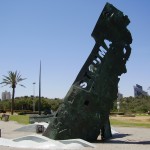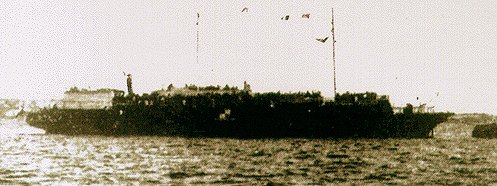
 The waters of the world contain the bodies of countless refugees. Quite often these seem to be the saddest of the stories of those lost at sea. Hopeless situations throughout history have led refugees to flee their homelands, only to find death instead of a rebirth.
The waters of the world contain the bodies of countless refugees. Quite often these seem to be the saddest of the stories of those lost at sea. Hopeless situations throughout history have led refugees to flee their homelands, only to find death instead of a rebirth.
The SS Struma was a ship chartered to carry Jewish refugees from Axis-allied Romania to British-controlled Palestine during World War II. The Struma voyage was one of several attempts by Zionist organizations to create a workable escape route for Jews from Eastern Europe – first to neutral Turkey via the Black Sea, then from Turkey to Palestine via land or sea.
The Jewish refugees on the Struma were mostly wealthy Romanian Jews who could afford the high price of their escape. What they found when they boarded the ship in Constanza, Romania in December 1941 was basically a derelict – a 180-ton two-masted vessel that had once been used to haul cattle on the Danube. There were approximately 770 people crowded into a space that could hold perhaps 100. There was one bathroom. The ship had wooden platforms built on the deck to allow more people to be transported. After three days at sea the engines failed and the vessel was towed into Istanbul. That’s when the real nightmare began.
For the next 71 days the ship lay at anchor, the refugees not allowed to leave. Food and water were provided by Jewish relief organizations. During this time secret negotiations were conducted between the Turks and British on the fate of the passengers. The British would not give the refugees entry papers into Palestine – fearing more violence in the Middle East if they did not restrict massive Jewish immigration. The Turks were neutral in the war at this time, and were a trading partner of Nazi Germany. They did not desire to become the conduit for Jewish refugees fleeing the Nazis.
On February 23, 1942 the Turks apparently believed that an impasse with Britain had been reached. They decided to rid themselves of the situation completely. Turkish authorities boarded the disabled ship and towed it through the Bosphorus strait to a site ten miles away in the Black Sea. The Turkish authorities then abandoned the ship with over 760 refugees and crew aboard. Without power for propulsion or food or water – the Struma, her crew, and over 750 refugees drifted on the Black Sea. On the morning of February 24, 1942 the Soviet submarine SC-213 torpedoed the Struma. The vessel sank almost immediately – at least 768 people died, including over 100 children. The Soviet submarine was under orders to sink any unidentified vessel to keep war materials from reaching Germany. Only one man survived the sinking of the Struma – a 19-year-old man named David Stoliar. Type Mr. Stoliar’s name into a search engine. The leading results will take you to video and audio histories he has recorded concerning his experience on Struma and his life after the incident. They are fascinating and horrifying. He presently lives in Oregon.
The two monuments shown above are found in Holon, Israel and Ashdod, Israel. I’ll cover an Israeli monument to another ill-fated refugee ship in a later post.
War always results in tragedy, but this is one that is difficult to comprehend and accept. Political considerations guided the ill-fated decisions of the British, the Turks, and the Soviets. But like many decisions guided solely by political considerations, basic humanity is somehow lost in the equation. What all too often results when politics trump basic human morality is the deaths of the most innocent…

Please leave a Comment